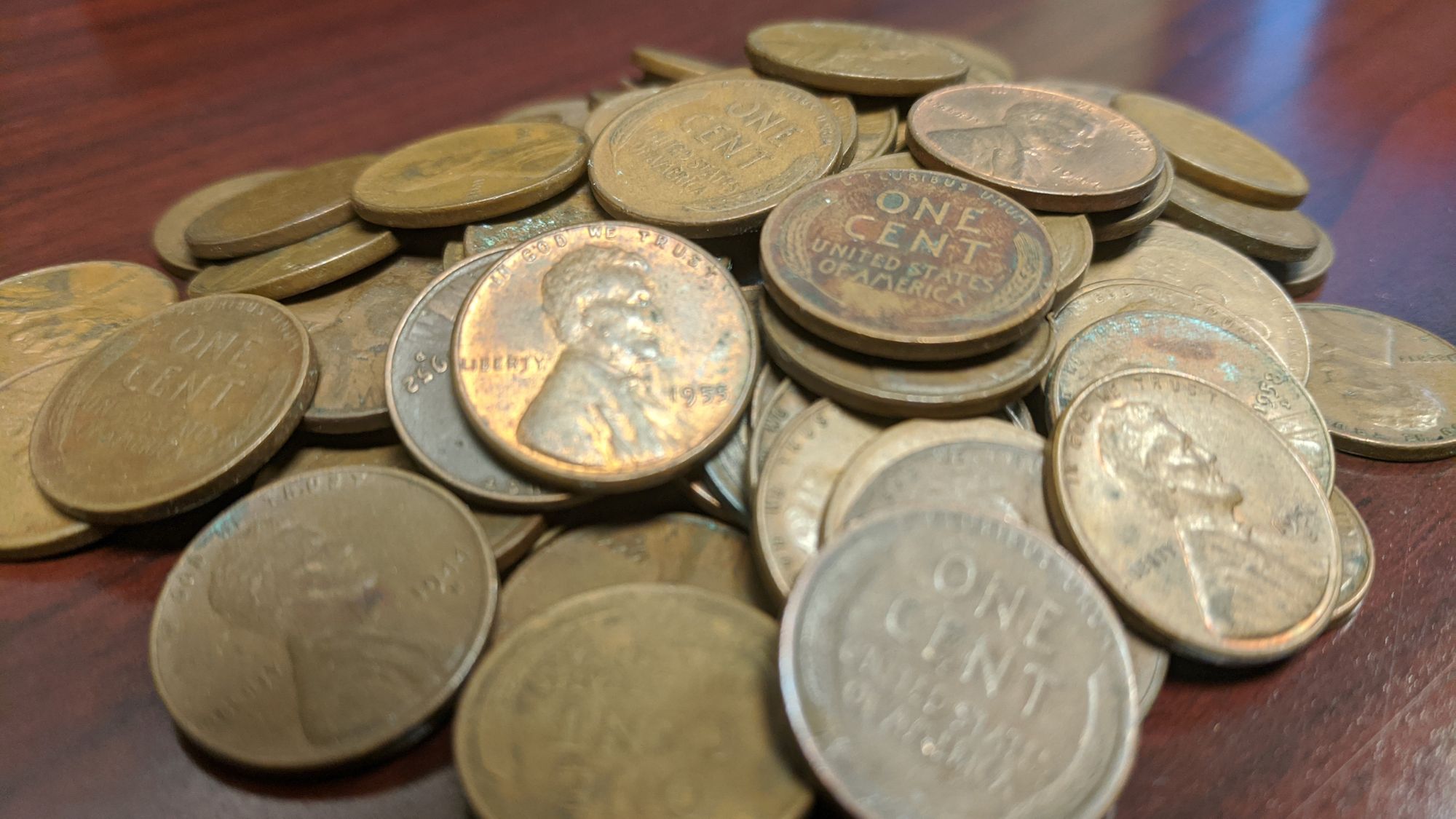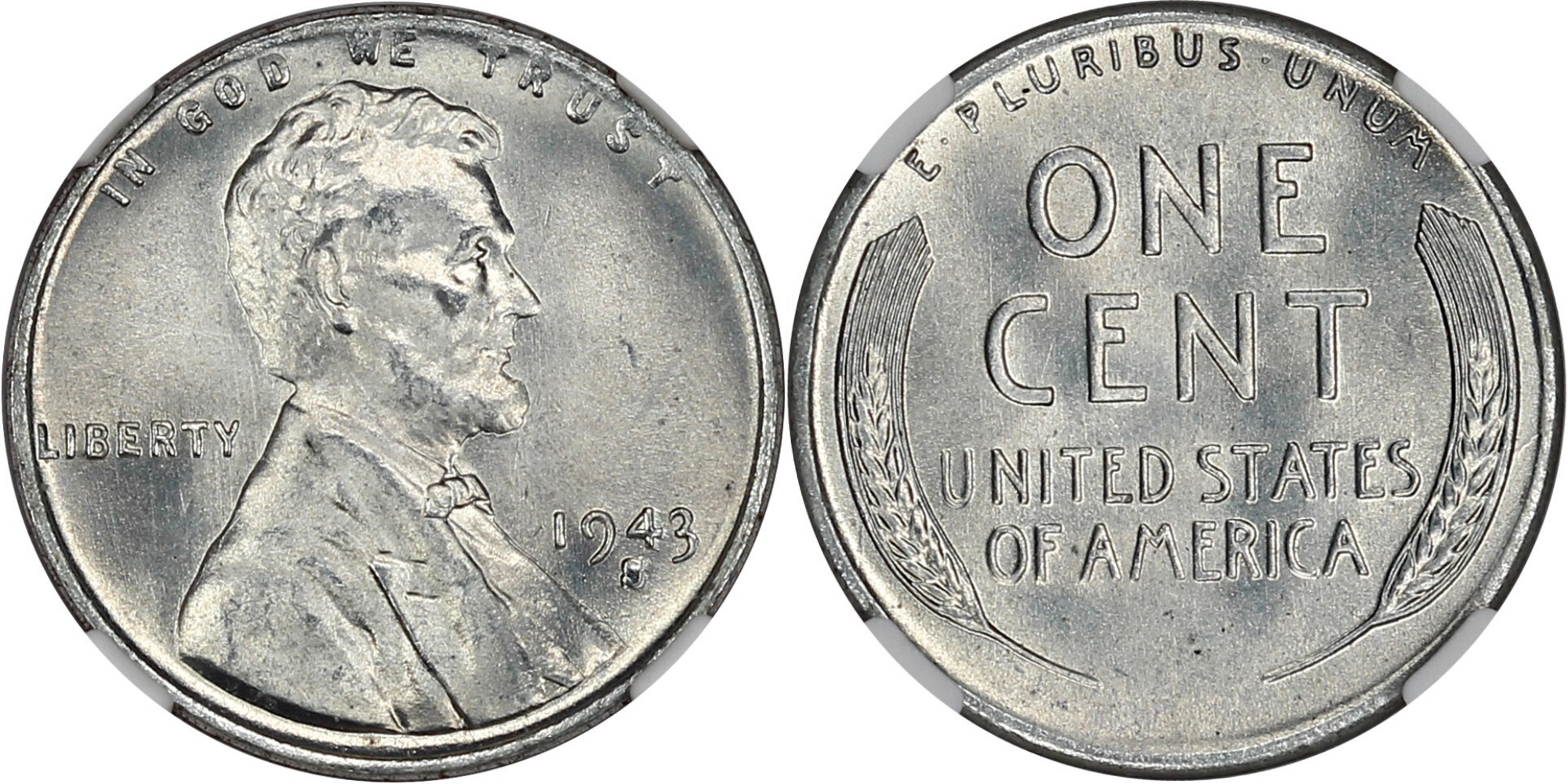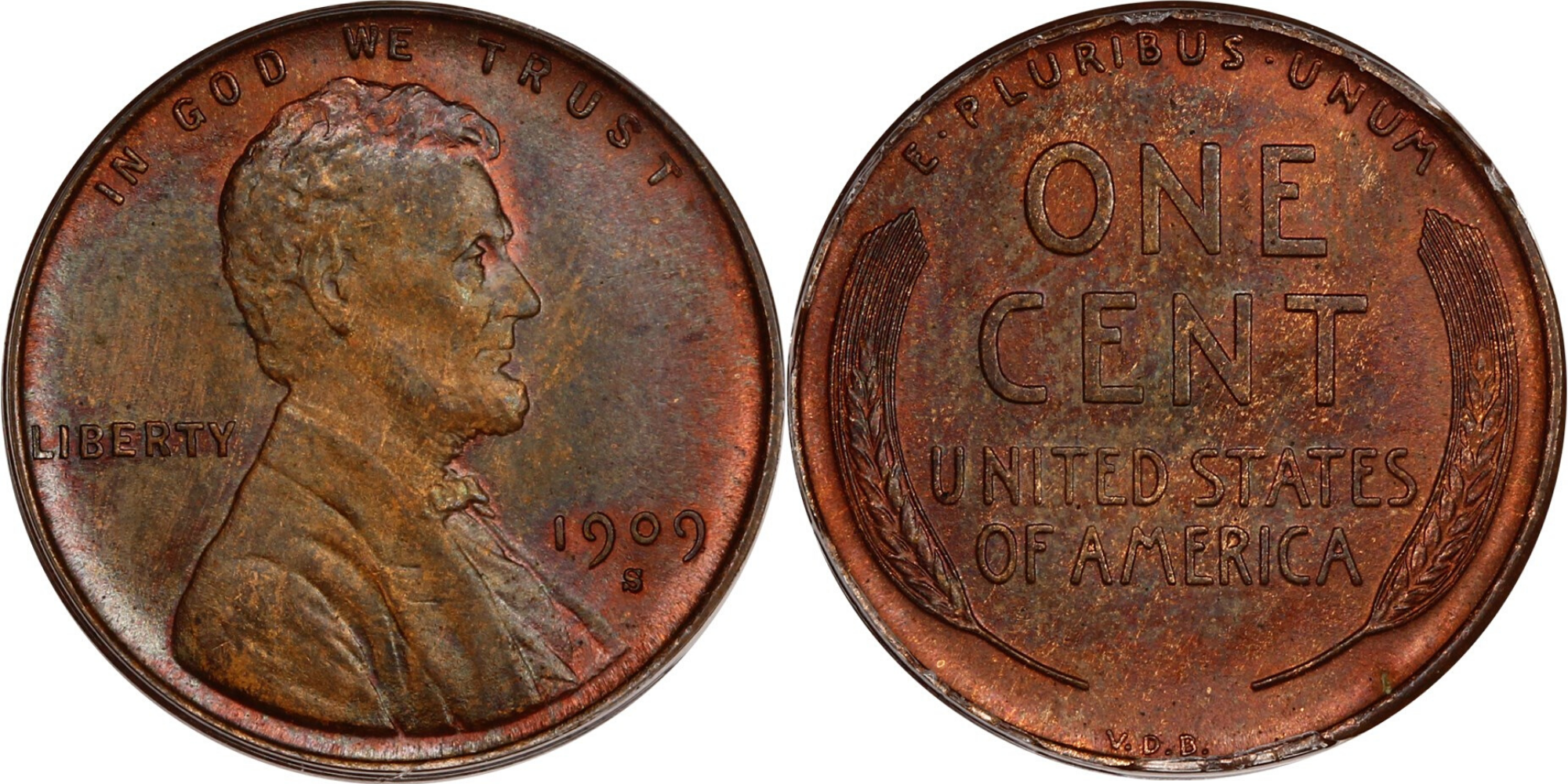Starting Out with Wheat Cents

One of the most common starter series for coin collectors, wheat cents are wildly popular. And rightfully so – common dates can still be found in circulation, and there are only a few particularly expensive dates. This makes wheat cents only a small investment at the beginning, while providing a challenge down the road as the set nears completion.
Issued from 1909 through 1958 at three different mints, a full wheat cent collection is a fairly large set – 141 coins, to be exact, if you don’t include major varieties like the 1955 doubled die. However daunting that number may seem, the majority of these pieces are common and easy to find. Some of the later dates can be found in circulation from time to time, and plenty of dealers sell wheats by the pound. Hunting through a few pounds of cents will fill in a surprising number of holes with very little investment.
Wheat cents from the 1940s and 1950s are the most common, with no standard issue key dates from either decade. All of these pieces can be found in uncirculated grades, commonly raw and very cheap although graded red examples can get pretty pricey around MS67. In 1943, cents were made from steel because copper was needed for World War II. These steel cents are very common and easy to find, many in high grades. A small number of 1943 cents were minted on copper planchets, and these are among the most famous wheat cents; the last to sell at public auction brought $216,000 in August 2019 for an AU53BN example. As such, these are not included in a standard set because they’re so rare.

The first semi-key date shows up in the 1930s – the 1931 S. With a mintage of 866,000, these can still be found for under $100 in lower grades but can go for anywhere between $400 and $2,000 for a gem example. The highest auction record for the date is $6,307 for an MS66+RD example that sold in February of this year.
Most key dates of the series are found from 1909 through the 1920s. The most famous and coveted wheat cents is the 1909 S VDB. This was the first year of the design, and the designer, Victor David Brenner, placed his initials on the reverse of the coin. There was a public outcry that they were too large, and they were removed entirely before the year was over. They were returned in 1918 in a less conspicuous place under Lincoln’s bust, but the mid-year design switch made the 1909 VDBs much rarer than their un-initialed counterparts. The Philadelphia Mint had already produced a large number of pieces, but only 484,000 had been struck at the San Francisco Mint.
With the lowest mintage of any official wheat cents issues, this is one of the undeniable keys to the series. The lowest recent auction record was $432 for a VG08 example in 2008. In AU grades they start bringing over $1,000, and MS67RD examples have brought up to $117,500. While definitely the key to the series, they’re also readily available. Many examples are on the market at any given point, and the only challenge is finding the exact grade you want and being able to afford it.

The 1909 S is also a semi-key with a mintage of 1,825,000. This is lower than most of the series, but examples can be readily found in decent grades for under $100, and only top pop red examples bring five-digit prices. Additionally, many of the 1910s pieces from the Denver and San Francisco Mints are also scarce, and the next real key is the 1914 D. From a mintage of 1,193,000, prices enter four digits for AU examples, similar to the 1909 S VDB. Fortunately for the new collector, the lower grades are significantly cheaper, bottoming out at $69 for an AG03 example in 2011.
In 1922, another key date was created by accident. Cents were only struck at the Denver Mint in 1922, but an obverse die was polished so much that the mint mark disappeared entirely, creating the 1922 No D. These are similar to the 1909 S VDB in rarity with a low auction record of $329 for a G04 example and passing the $1,000 mark in XF. Only ten examples are believed to survive in gem grades, compared to 3,000 for the 1909 S VDB. Many people saved the first-year pieces in 1909, but few paid attention when the mint mark disappeared in 1922. Most of these circulated long before being pulled out for collections, resulting in lower grades.
There are a few varieties that could be included in a set which raise the price tag quite a bit, such as the 1955 doubled die. A rather dramatic error, these are priced similarly to the 1909 S VDB. The U.S. also produced matte proofs from 1909 through 1916 which you can read about here, and normal proofs from 1936 through 1958.
All in all, wheat cents are a very flexible set. If you want a phenomenal set and have a large budget, you can go for top-pops and include proofs or varieties. However, if you’re just starting out, they can be a very inexpensive way to get your feet wet in numismatics. Even if you can’t afford the key dates when you start, who’s to say you won’t be able to down the road?
Visit davidlawrence.com to buy, sell, consign, or bid in our weekly online auctions! Call 800-776-0560 or email coingroup@davidlawrence.com with any questions.
